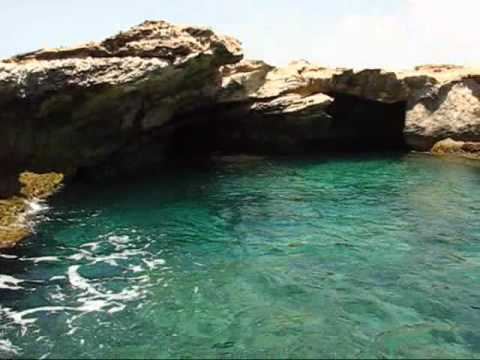Elevation 200 m Period Neolithic | ||
 | ||
Gopro the underwater caves of kfar abida lebanon
Kfar Abida or Kfar Aabida (Arabic: كفر عبيدا) is a village located 2 kilometres (1.2 mi) south of Batroun in the Batroun District of North Governorate in Lebanon. The part of the village in the south west is also known by the older name of Fadous or Fadaous.
Contents
- Gopro the underwater caves of kfar abida lebanon
- Map of Kfar Aabida Lebanon
- Joining beach kfar abida and chouwen river lebanon
- Tell Fadous
- Fadous Sud
- References
Map of Kfar Aabida, Lebanon
Joining beach kfar abida and chouwen river lebanon
Tell Fadous
Tell Fadous, Tell Fadaous, Fadaous or Fadeous is a tell mound south west of Kfar Abida that was first reported on by R. Wetzel and J. Haller in 1945 above the cemented beach deposits at 6 metres (20 ft). A few Levallois flint flakes were found in part of the site on top of a dune. Recent studies by Hermann Genz and Hélène Sader from the American University of Beirut have shown that the tell was inhabited up until the Early Bronze Age when it was abandoned in the late third millennium BCE. Ralph Pederson from the University of Marburg also conducted a study in the maritime archaeology of the coast around Tell Fadous. Pederson suggested that the locale of "Tell Bay" could have been used as harbourage by Bronze Age fishermen, as attested to by remains of fish and seashells found at the tell. He also found a neolithic flint blade in the shallows at Tell Bay.
Fadous Sud
Fadous Sud or Fadaous Sud is a Heavy Neolithic site of the Qaraoun culture located south of the tell, some 300 metres (980 ft) south of the village. It was discovered by Maurice Tallon in 1957 between the sea and the road. The site was found to extend east of the road in 1966 by W.E. Wendt, when material was recovered and the site examined by Lorraine Copeland and Henri Fleisch . The large site covers the 400 metres (1,300 ft) either side of the main road up to the side of a wadi.
Fadous Sud proved to be an enormous Heavy Neolithic flint factory site with finds forming a wide-ranging assemblage in grey flint and cream chert that included large cores and flakes as well as scrapers, rabots, long blades, end scrapers, racloirs and a group of triangular flakes. Material from the beach had a whiter patina than that found nearer the road. The assemblage showed distinct similarities to that of the Heavy Neolithic type site at Qaraoun II and was classed as Neolithic. The finds were stored with the Saint Joseph University. A new study of this lithic site south of Tell Fadous was carried out in 2005 by Dörte Rokitta-Krumnow.
